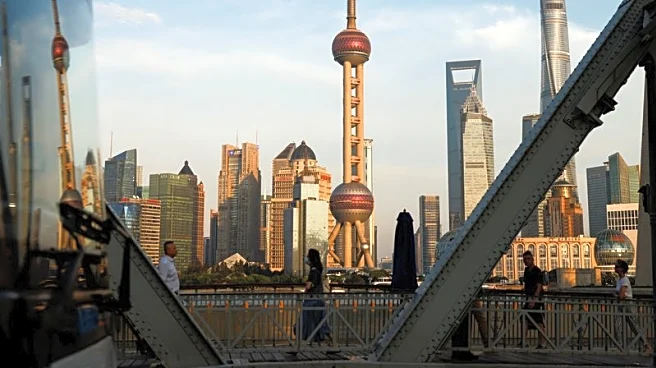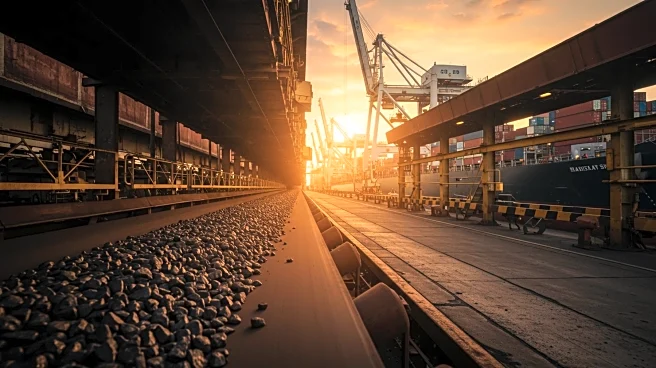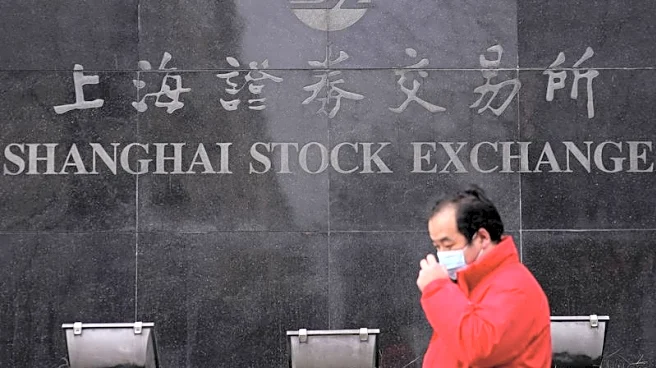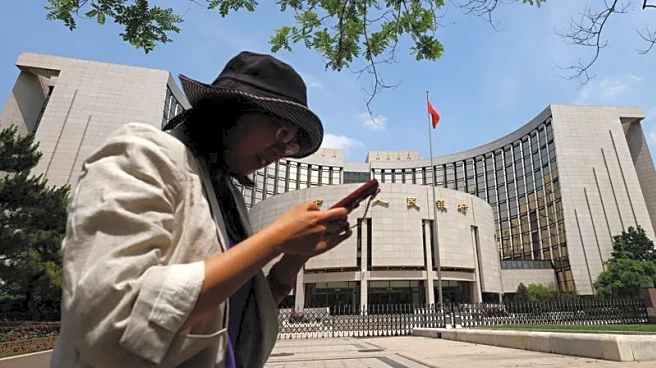What's Happening?
Iron ore futures experienced a rebound on Thursday following a mandated production cut in China that was less severe and shorter than anticipated. This development alleviated previous concerns about demand. The most-traded January iron ore contract on China's Dalian Commodity Exchange closed daytime trade 0.98% higher at 772.5 yuan ($107.63) per metric ton. Similarly, the benchmark September iron ore on the Singapore Exchange rose 0.55% to $101.3 a ton. These increases come after six consecutive sessions of decline, driven by demand concerns as steelmakers in Tangshan, a major production hub, were required to curb production to improve air quality in Beijing for an upcoming military parade. Analysts suggest that the shorter-than-expected duration of production restrictions will limit the overall impact on iron ore demand.
Why It's Important?
The rebound in iron ore prices is significant as it reflects the market's response to changes in production policies in China, a major player in global steel production. The easing of production restrictions in Tangshan suggests a potential stabilization in iron ore demand, which is crucial for global markets reliant on steel and related industries. This development may benefit iron ore producers and exporters, as steady demand could support price stability. Conversely, steelmakers facing production cuts might experience temporary disruptions, affecting their output and profitability. The situation underscores the interconnectedness of environmental policies and industrial production, highlighting the delicate balance between economic activity and environmental considerations.
What's Next?
As production restrictions in Tangshan are expected to be shorter than initially anticipated, analysts predict that hot metal output, a key indicator of iron ore demand, will likely remain steady. This could continue to support iron ore prices in the near term. Stakeholders, including steel producers and environmental regulators, will be closely monitoring the situation to assess the impact of these restrictions on air quality and industrial output. Future policy decisions regarding production curbs could further influence market dynamics, with potential implications for global supply chains and pricing strategies.
Beyond the Headlines
The situation in Tangshan highlights the broader implications of environmental policies on industrial production. As China continues to balance economic growth with environmental sustainability, similar production restrictions may become more common, potentially affecting global commodity markets. This trend could drive innovation in cleaner production technologies and practices, as industries seek to comply with environmental standards while maintaining output levels. The evolving landscape may also prompt international discussions on sustainable industrial practices and their role in mitigating climate change.












